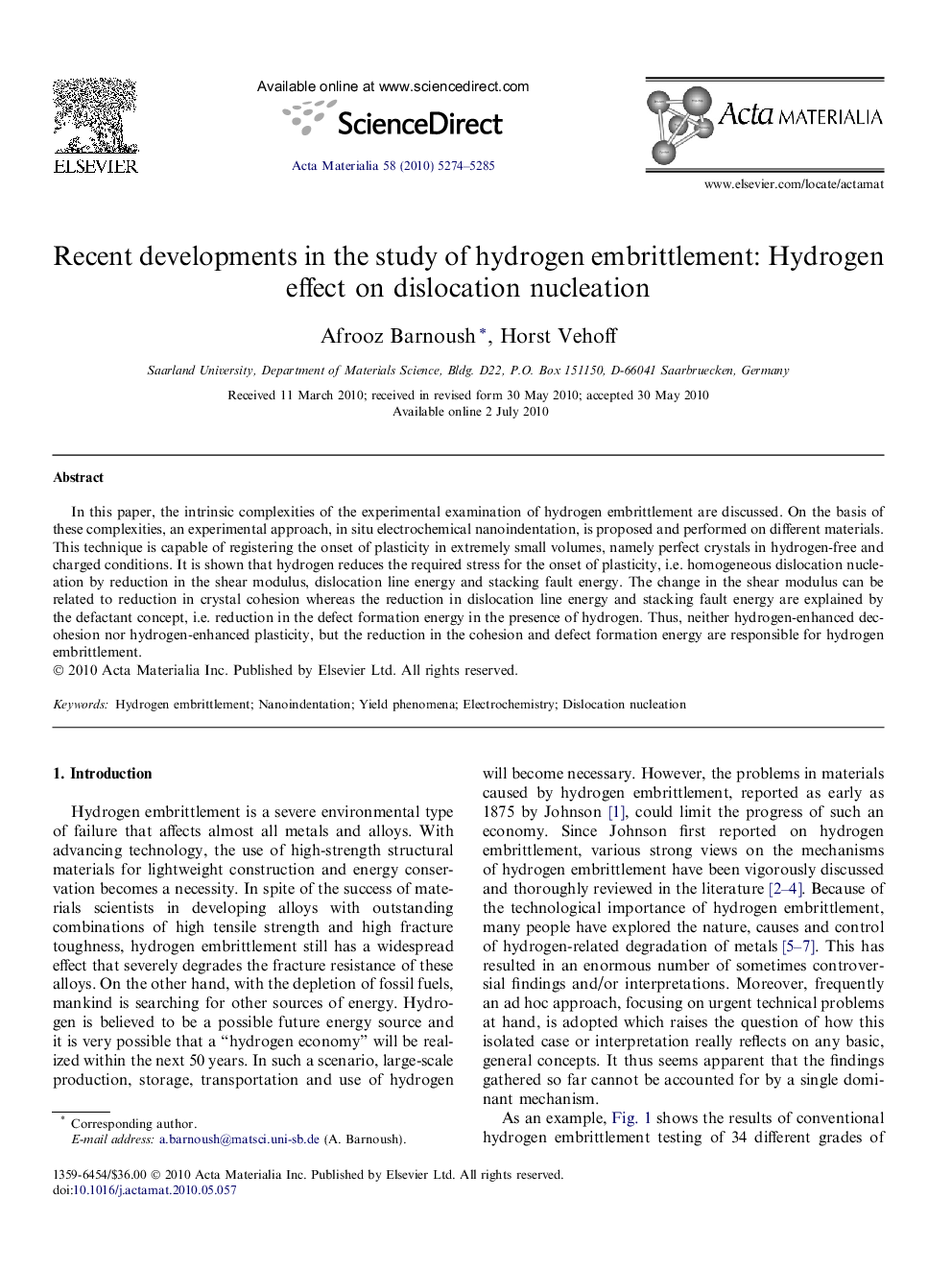| Article ID | Journal | Published Year | Pages | File Type |
|---|---|---|---|---|
| 1448151 | Acta Materialia | 2010 | 12 Pages |
In this paper, the intrinsic complexities of the experimental examination of hydrogen embrittlement are discussed. On the basis of these complexities, an experimental approach, in situ electrochemical nanoindentation, is proposed and performed on different materials. This technique is capable of registering the onset of plasticity in extremely small volumes, namely perfect crystals in hydrogen-free and charged conditions. It is shown that hydrogen reduces the required stress for the onset of plasticity, i.e. homogeneous dislocation nucleation by reduction in the shear modulus, dislocation line energy and stacking fault energy. The change in the shear modulus can be related to reduction in crystal cohesion whereas the reduction in dislocation line energy and stacking fault energy are explained by the defactant concept, i.e. reduction in the defect formation energy in the presence of hydrogen. Thus, neither hydrogen-enhanced decohesion nor hydrogen-enhanced plasticity, but the reduction in the cohesion and defect formation energy are responsible for hydrogen embrittlement.
